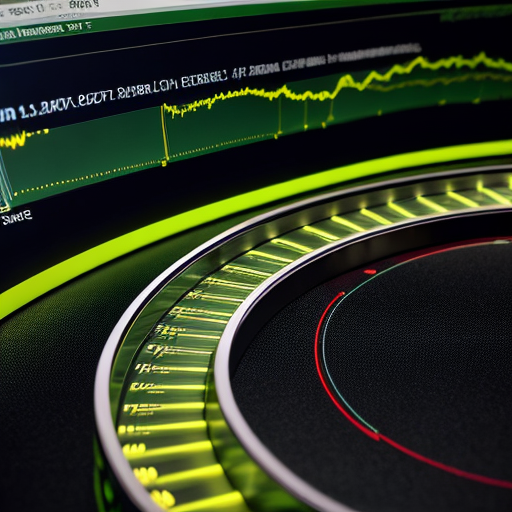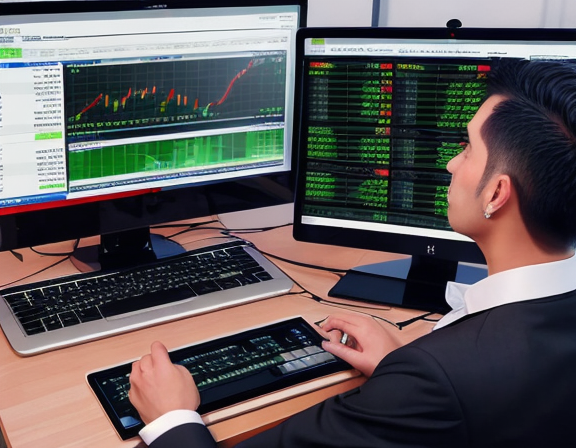Introduction
Embarking on the world of forex trading may appear intricate to beginners, but this comprehensive guide aims to demystify the complexities. “A Beginner’s Guide to Forex Trading: Getting Started and Key Concepts” serves as your compass, offering essential insights for navigating currency exchange.
Foreign exchange trading, commonly known as Forex or FX, is a decentralized global market where all the world’s currencies are exchanged.
Forex trading has a significant role in the world economy as it allows businesses and individuals to conduct transactions with foreign parties.
As a beginner, trading in Forex may seem confusing and complicated. However, understanding the basics can simplify the process and provide a solid foundation for further learning.
This beginner’s guide to Forex trading will identify the key concepts involved in Forex trading, along with the key terms and jargon that traders must understand.
This guide will also provide an overview of the steps involved in getting started with Forex trading, including selecting a broker, opening an account, and analyzing the market.
By the end of this guide, readers will have a greater understanding of Forex trading basics and be adequately equipped to start trading.

Brief explanation of Forex trading
Forex trading is the exchange of different currencies based on their perceived value to each other. It is especially relevant for those who want to speculate on the movements in currency exchange rates. For instance, if a trader believes that the euro will appreciate against the dollar, they could buy a certain amount of euros with dollars and wait for the exchange rate to change in their favor.
The most common trading pairs are USD/EUR, GBP/USD, USD/JPY, and EUR/JPY, where the first currency is the base currency, and the second currency is the quote currency. Forex trading takes place over a decentralized network of global markets, and the market is open 24 hours a day, five days a week. Forex traders also use various analytical tools such as technical analysis, fundamental analysis, and sentiment analysis to make trading decisions.
Importance of learning about Forex trading
In today’s globalized world, Forex trading has become an essential tool for individuals, businesses, and governments alike, as they seek to navigate the complex and ever-changing financial landscape. Understanding the principles of Forex trading is critical for those who wish to be successful in their investment decisions, and for those who want to take advantage of the financial opportunities that this market offers.
Becoming knowledgeable about the currency market enables traders to make informed decisions, minimize their risks, and maximize their profits. Besides, Forex trading is a fantastic way to diversify one’s portfolio, allowing investors to spread their risk across multiple currency pairs. The importance of learning about Forex trading can’t be overstated, as it provides a foundation for those seeking to invest in this exciting and dynamic market.
Overview of the essay
In conclusion, this essay provided an in-depth overview of the basics of Beginner’s Guide to Forex Trading, including what it is, how it works, and what key concepts beginner traders need to be aware of before diving into the market. We discussed the currency pairs, the importance of leverage, the role of brokers, and the different strategies traders employ to make profits. We also touched on some of the risks and challenges associated with Beginner’s Guide to Forex Trading, such as the potential for losses, the impact of political and economic events on the market, and the need for disciplined risk management.
Overall, the forex market offers a potentially lucrative opportunity for traders who are willing to put in the time and effort to understand its complexities and develop their skills and knowledge. With practice and a solid understanding of the key concepts presented in this essay, even beginner traders can become successful in the forex world.
Fundamental analysis
Fundamental analysis is an approach that seeks to determine the intrinsic value of an asset by examining broad economic and financial factors, such as interest rates, inflation, political stability, and economic growth. This type of analysis is usually used by long-term investors who seek to hold their positions for a longer period. The fundamental factors that are analyzed can help provide insight into the direction of an asset’s price in the future.
In the forex market, economic indicators such as Gross Domestic Product (GDP) data, employment reports, and monetary policy announcements by central banks are closely monitored to determine the health of a country’s economy and currency. Fundamental analysis serves as a complementary approach to technical analysis in helping traders make informed decisions about their positions.

Beginner’s Guide to Forex Trading – Getting started
Once you have opened a trading account and deposited funds, you can start trading in the foreign exchange market. But before starting, you need to understand some of the trading terminologies. The first thing you will come across is currency pairs. Forex trading involves the buying of one currency and selling of another currency simultaneously. The exchange rate between the two currencies is what you will be speculating on while trading forex.
Forex brokers provide you with a trading platform that allows you to trade currency pairs, track prices, place orders, and manage risk. When you start trading, it is essential to start with small positions until you gain experience and confidence in your trading skills. Finally, you should have a solid trading strategy and a risk management plan to avoid significant losses while trading.
Choosing a reputable broker
Choosing a reputable broker is crucial in Beginner’s Guide to Forex Trading. A broker is essentially the intermediary who facilitates the buying and selling of currency pairs on the trader’s behalf. As such, the broker must be experienced, trustworthy, and transparent in their dealings. First and foremost, a reputable broker must be regulated by a recognized financial authority to ensure they adhere to strict standards of conduct. It’s also important to consider factors like trading platforms, fees and commissions, customer support, and account types when choosing a broker.
Generally, a good place to start is by researching different brokers, comparing their features and offerings, and reading reviews from other traders. Ultimately, selecting the right broker can make the difference between success and failure in forex trading.

Understanding the different types of accounts
There are several types of trading accounts offered by Forex brokers, with the most common being the standard, mini, and managed accounts. A standard account typically requires a minimum deposit of $2,000 and offers full access to trading platforms and tools, as well as the option to trade in any currency pair. Mini accounts usually require a smaller deposit, typically ranging from $50 to $500, and allow traders to trade smaller lot sizes.
Managed accounts are typically offered to high net worth individuals and institutional investors, in which a professional trader or a team of traders manages the account on behalf of the investor. Investors can also choose between different types of Forex accounts, such as individual accounts, joint accounts, and corporate accounts, each with varying levels of management, control, and tax liabilities.
Demo account vs. live account
It is important to understand the difference between a demo account and a live account in Beginner’s Guide to Forex Trading. A demo account is a practice account that allows traders to test their strategies and learn the platform without risking real money. It is essentially a simulation of the live trading environment. On the other hand, a live account involves trading with real money. It allows traders to experience the full range of emotions and risks involved in forex trading.
Live accounts may be funded by the trader themselves or by an external source such as an investor or a broker. While demo accounts are important for learning and testing, they cannot fully replicate the real trading environment. Thus, it is crucial for traders to gradually transition from a demo account to a live account with caution and proper risk management strategies.
Key concepts in Beginner’s Guide to Forex Trading
While Forex trading is exciting, it is essential to have a strong understanding of key concepts that govern this market. Firstly, the concept of currency pairs is fundamental. Currency pairs are a set of two currencies paired and traded against each other. Secondly, the concept of bid/ask price is crucial. The bid price refers to the highest price a buyer can pay for a specific currency, whereas the ask price is the lowest price a seller is willing to take for the same currency.
This concept is vital as it affects the profit or loss you make in Forex trading. Lastly, understanding the concept of leverage is essential. Leverage is the practice of borrowing from your brokerage firm to increase your trading positions. While leverage can magnify your profits, it can also lead to significant losses. It is, therefore, important to use leverage prudently.
Understanding currency pairs
Understanding currency pairs is a crucial concept in Forex trading. As mentioned earlier, currencies are traded in pairs, so if a trader wants to buy one currency, they simultaneously sell another. Each currency pair has a unique code that represents it, consisting of three letters. The first two letters represent the country, while the last one denotes the currency’s name.
For instance, the most commonly traded currency pair is EUR/USD, which represents the Euro versus the US Dollar. The currency on the left (EUR in this case) is referred to as the base currency, while the one on the right (USD) is termed the quote currency. Understanding how currency pairs work and their unique characteristics is crucial for successful Forex trading. Factors that have a profound impact on the currency pair’s price include global economic conditions, geopolitical events, and market sentiment.
Pips, spreads, and margin
When trading forex, it’s essential to understand the terms pips, spreads, and margin. A pip is the smallest unit of measure in a currency pair, and it signifies the fourth decimal place in most cases. For example, if the EUR/USD currency pair moves from 1.1010 to 1.1005, it’s dropped by five pips.
Spreads refer to the difference between the buy and sell price of a currency pair and represent the cost of trading. Generally, major currency pairs have lower spreads than minor pairs, which tend to be riskier. Margin, on the other hand, refers to the minimum amount required to initiate a trade, which is usually a percentage of the total trade value. The margin ensures that traders can leverage their positions and make larger profits, but it can also increase potential losses.
Leverage
Leverage is one of the most significant features of forex trading beginners must know, and it has an immense impact on the profits and losses of a trader. It is the ratio of the size of a position taken by a trader to the size of their capital. For instance, a trader with a $10,000 account and a 100:1 leverage can take a position worth $1 million. This amplifies both the potential profits and losses.
Although the high leverage provides an opportunity to make larger profits, it drastically increases the risk. Therefore, it is essential to use leverage carefully, considering the potential risks. The recommended leverage for beginners is 50:1 or less. Moreover, a trader should have a risk management plan in place before placing any trade to ensure that they can withstand potential losses.
Technical and fundamental analysis
Another important aspect of forex trading is analyzing the market. There are two main methods of analysis used in forex trading: technical analysis and fundamental analysis. Technical analysis involves studying the historical price movements of a currency pair to identify patterns, trends, and potential trading opportunities. Technical analysts use charts, graphs, and other tools to identify patterns and trends and make informed trading decisions.
On the other hand, fundamental analysis involves studying economic, political, and social factors that could affect the market’s performance. Fundamental analysts focus on macroeconomic indicators such as GDP, inflation, employment data, and interest rates. Both technical and fundamental analysis are important for forex trading, and successful traders often use a combination of both methods to make informed trading decisions.
Risk management in Forex trading
Risk management is an essential factor to consider when trading in the Forex market. Traders must be conscious of the risks associated with currency trading and how to mitigate them. Proper risk management techniques, such as setting stop-loss orders and monitoring leverage ratios, can minimize losses and prevent traders from wiping out their trading accounts.
It is also important to diversify investments and avoid putting all funds into a single currency pair. Moreover, Forex market traders should learn to manage emotions and avoid making impulsive decisions that could lead to poor trade choices that ultimately impact their portfolios. As such, managing risks and implementing sound policies is crucial to long-term success in Forex trading.
Using stop-loss orders
Another way traders can minimize losses is by using stop-loss orders. A stop-loss order is an instruction given to a broker to sell a trade when it hits a certain price limit. This order helps minimize losses by automatically closing a trade when it reaches a predetermined level below the current market price. This means that if the market moves against a trader, a stop-loss order will help limit the damage.
Using stop-loss orders also removes the emotional element of trading, as traders don’t have to constantly watch the market and make impulsive decisions. It’s important to note that stop-loss orders are not foolproof and are subject to slippage, which occurs when there is a significant gap between the current market price and the stop-loss order price. All things considered, stop-loss orders are valuable tools for traders who want to manage risk and protect their capital.
Avoiding over-leveraging
One of the crucial aspects of forex trading, or any kind of trading, is avoiding over-leveraging. Leverage is a means of amplifying one’s trading position by borrowing capital from a broker. While leverage can certainly increase profit potential, it also magnifies potential losses, especially when used without proper risk management.
In forex trading, over-leveraging occurs when traders exceed their means by opening positions that are beyond their account balance. This can lead to significant losses that can exceed one’s initial investment. Therefore, it is vital for beginners to understand the concept of leverage and trade with a level of cautiousness. One way to avoid over-leveraging is by using proper risk management techniques, such as limiting the amount of leverage used, placing stop-loss orders, and diversifying one’s trades.
The importance of having a trading plan
Having a trading plan is essential to successful Forex trading. A trading plan outlines the rules and guidelines that a trader follows when executing trades. The plan should provide a framework for how much a trader is willing to risk per trade, the types of currency pairs and timeframes to trade, as well as the desired profit and loss targets.
A well-constructed trading plan can help traders prevent emotional decisions, which can lead to poor trading outcomes. Additionally, a trading plan provides a record of past trades, which traders can review for insight into their performance. By staying committed to the trading plan, traders can reduce the negative impact of random market fluctuations and improve their chances of long-term success. Therefore, having a trading plan is a critical factor in Forex trading, and all traders should establish one before entering the market.
Common mistakes to avoid in Forex trading
Common mistakes can prevent a trader from reaching their goals in Forex trading. These mistakes include having unrealistic expectations, not managing risk properly, overtrading, and not having a solid trading plan. One of the most common mistakes is greed, which can lead to holding onto losing positions for too long or placing large trades without proper risk management. Overtrading can also lead to significant losses, as traders may become too emotional and make impulsive trades without considering their strategy.
It is vital to have a solid trading plan that outlines entry and exit points, risk management strategies, and the overall market conditions. Traders who can avoid these common mistakes and stick to their trading plan can increase their chances of success in Forex trading.
Chasing after profits
Chasing after profits can be one of the biggest pitfalls of Forex trading. While the goal of trading is, of course, to make money, it is important to remember that there are no guarantees in the market. Focusing solely on profits can lead to taking on too much risk, making impulsive trades, and ignoring critical exit signals. It is crucial to have a well-thought-out trading plan in place, which includes a clear risk management strategy and achievable profit targets.
This will allow you to approach trading in a disciplined and strategic manner, rather than chasing after profits blindly. Additionally, it is important to keep your emotions in check. Fear, greed, and impatience can all lead to making irrational decisions and taking unnecessary risks. By focusing on your trading plan and keeping your emotions in check, you will be better positioned to achieve long-term success in the Forex market.
Ignoring risk management
Ignoring risk management is a common mistake made by many new Forex traders. Although the potential profits may seem enticing, it is crucial to remember that trading also comes with inherent risks. Failing to manage these risks can lead to significant losses and potentially, wipe out an entire trading account. Risk management entails understanding the risks involved in each position, setting stop-loss orders, and being disciplined enough to adhere to them.
Additionally, traders must set realistic profit targets and evaluate their risk versus reward ratios to ensure they are not exposing themselves to unnecessary risk. Without proper risk management, traders may experience a short-lived, ‘boom and bust’ cycle that could leave them feeling frustrated and disenchanted with the Forex market. Thus, it is imperative always to consider risk management when trading Forex.
Emotional trading
Emotional trading is the act of making impulsive and irrational decisions based on emotions rather than logic and analysis. Such decisions can be driven by a range of feelings, such as fear, greed, and anxiety, and often result in negative outcomes for traders. Emotional trading can be attributed to several factors, including lack of discipline, inadequate risk management, and overconfidence, among others.
As emotions tend to intensify in volatile markets, traders may be more prone to engaging in emotional trading during times of uncertainty or heightened instability. In order to avoid emotional trading, traders are advised to adopt a systematic and disciplined approach to decision-making and to develop strong risk management strategies to limit potential losses.
Additionally, traders should cultivate a keen awareness of their own emotional state and take steps to manage their emotions effectively during trading.

Understanding market liquidity
One of the key concepts in Beginner’s Guide to Forex Trading is market liquidity. Liquidity refers to the ease with which an asset can be bought or sold without significantly impacting its price. In the forex market, liquidity is determined by the volume of trading activity. Currencies that are frequently traded, such as the US dollar, euro, and yen, are considered to be highly liquid. On the other hand, currencies that are rarely traded, such as the Tanzanian shilling or the Paraguayan guarani, would be considered illiquid.
It’s important for traders to pay attention to liquidity levels when choosing which currency pairs to trade, as high liquidity can reduce the risk of large price movements and slippage. Factors that can impact liquidity in the forex market include economic events, market sentiment, and trading volume.
Conclusion
In conclusion, forex trading can be a lucrative investment opportunity when approached with the right mindset, knowledge, and strategy. It is imperative for beginners to understand and grasp key concepts such as currency pairs, exchange rates, and market volatility. They must also have a basic understanding of the economic, geopolitical, and social events that influence currency value and market behavior.
The use of demo accounts, risk management techniques, and continuous learning through forums, courses, and seminars can help enhance a beginner’s knowledge and confidence in forex trading. Additionally, seeking guidance from experienced traders and brokers can provide valuable insights for successful trading.
It is important to remember that forex trading involves some level of risk, and therefore, traders should exercise caution and make calculated decisions. With the right approach and mindset, forex trading can be a rewarding experience.
The benefits of Beginner’s Guide to Forex Trading
The benefits of Forex trading are numerous. It allows traders to operate on a 24/7 basis, giving them access to a global market that is always active. This means that traders can react quickly to changes in economic and political events that may have an impact on currency values. The Forex market is also highly liquid, making it easy to enter and exit positions quickly. Additionally, Beginner’s Guide to Forex Trading allows for high leverage, which means that traders can control a larger amount of money with a smaller investment. Finally, Forex trading allows traders to profit from both rising and falling currency values, giving them the opportunity to make money in any market condition. These benefits, among others, have made Forex trading a popular choice for both novice and experienced traders.
Importance of continuous learning and improvement
Continuous learning and improvement is essential in the field of forex trading, as the market is constantly evolving and changing. A successful forex trader understands the importance of staying on top of current trends, news, and market developments. This means taking the time to read books, attend seminars, and keep up with the latest technology and trading software.
Constant improvement also includes analyzing past trades and mistakes in order to learn from them and avoid repeating them in the future. This dedication to ongoing learning and improvement allows traders to stay ahead of the competition and make informed decisions, ultimately leading to increased profits and success in the industry.
Therefore, any individual aspiring to become a successful forex trader should prioritize continuous learning and strive to improve their skills and knowledge on an ongoing basis.
Final thoughts and recommendations
In conclusion, forex trading is a great way for individuals to potentially generate income, but it requires discipline, patience, and a willingness to continually learn and adapt. It is important to start with education and training, utilizing demo accounts to practice trading, and always manage risk with proper money management strategies.
Additionally, keeping emotions in check and having a clear understanding of market trends and technical analysis can improve trading success. It is recommended that beginners start with small amounts of capital and gradually increase their investments as they gain experience and confidence. Finally, finding a trusted forex broker is crucial to success in the market.
Overall, with dedication and effort, forex trading can be a profitable and rewarding experience for those willing to put in the work.


Leave a Reply